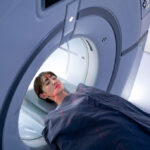Scoliosis is a medical condition that causes the spine to curve to the side, resulting in an abnormal posture. There are several different types of scoliosis, each with its own unique characteristics and causes.
In this article, we’ll explore the different types of scoliosis, their symptoms, and treatment options.
Idiopathic Scoliosis
Idiopathic scoliosis is the most common type of scoliosis and accounts for approximately 80% of all cases. This type of scoliosis is usually diagnosed in children or adolescents and is more common in girls than boys. The cause of idiopathic scoliosis is unknown, but it is believed to be related to genetic factors.
Symptoms of idiopathic scoliosis may include:
- Uneven shoulders or hips
- A noticeable curve in the spine
- Back pain
- Fatigue or muscle weakness
- Difficulty standing up straight
Treatment for idiopathic scoliosis may include observation, bracing, or surgery, depending on the severity of the curvature and the age of the patient.
Congenital Scoliosis
Congenital scoliosis is a rare type of scoliosis that occurs when the spine fails to develop properly in the womb. This type of scoliosis is typically diagnosed in infants or young children and may be associated with other birth defects or abnormalities.
Symptoms of congenital scoliosis may include:
- A visible curve in the spine
- Uneven shoulders or hips
- Difficulty breathing or eating
- Developmental delays or other neurological issues
Treatment for congenital scoliosis may include observation, bracing, or surgery, depending on the severity of the curvature and the age of the patient.
Neuromuscular Scoliosis
Neuromuscular scoliosis is a type of scoliosis that is associated with neurological or muscular disorders, such as cerebral palsy, muscular dystrophy, or spinal cord injury. This type of scoliosis typically develops in childhood and may progress rapidly.
Symptoms of neuromuscular scoliosis may include:
- A visible curve in the spine
- Uneven shoulders or hips
- Difficulty standing or walking
- Muscle weakness or atrophy
- Breathing difficulties
Treatment for neuromuscular scoliosis may include observation, bracing, or surgery, depending on the severity of the curvature and the underlying condition.
Degenerative Scoliosis
Degenerative scoliosis is a type of scoliosis that occurs in older adults and is related to the natural aging process. This type of scoliosis is typically associated with the degeneration of the discs and joints in the spine and may be worsened by osteoporosis or other bone disorders.
Symptoms of degenerative scoliosis may include:
- A visible curve in the spine
- Back pain, especially when standing or walking
- Numbness or tingling in the legs or feet
- Muscle weakness or stiffness
- Difficulty standing up straight
Treatment for degenerative scoliosis may include pain medication, physical therapy, or surgery, depending on the severity of the curvature and the underlying condition.
Conclusion
Scoliosis is a medical condition that affects the curvature of the spine and can have a significant impact on an individual’s health and well-being. Understanding the different types of scoliosis and their symptoms can help individuals seek appropriate treatment and manage their condition effectively.
FAQs
Can scoliosis be cured?
While there is no cure for scoliosis, treatment options such as observation, bracing, or surgery can help manage the condition and prevent complications.
Can scoliosis be caused by poor posture?
Poor posture may contribute to scolosis, but it is not the primary cause. Scoliosis is a complex medical condition that may be caused by a variety of factors, including genetics, neuromuscular disorders, and spinal abnormalities.
Can scoliosis worsen with age?
Yes, some types of scoliosis, such as degenerative scoliosis, can worsen with age due to the natural aging process and other underlying conditions.
How is scoliosis diagnosed?
Scoliosis is typically diagnosed through a physical exam, including a visual assessment of the spine and a measurement of the curvature. Additional diagnostic tests, such as X-rays or MRI scans, may be ordered to determine the severity and underlying cause of the condition.
Can scoliosis cause long-term health problems?
If left untreated, scoliosis can lead to a variety of long-term health problems, including chronic back pain, respiratory problems, and reduced mobility. However, with appropriate treatment and management, most individuals with scoliosis can lead healthy and active lives.







